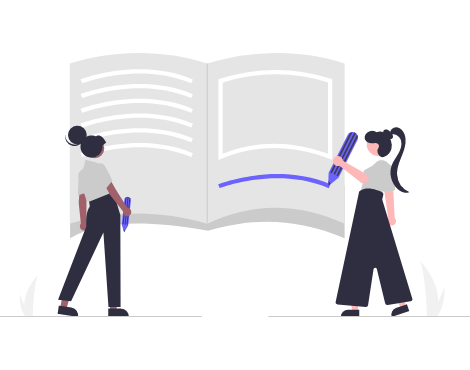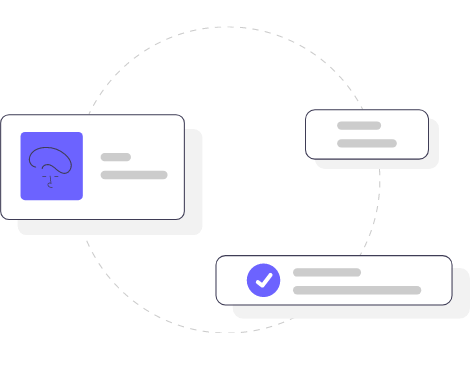This is the third part of a series of articles dedicated to the adaptation of call center agents and managers. Don’t miss the previous ones: in the first part, we talked about preliminary measures, in the second — about interviews. In this article, we are going to share about the next stage – training. Read about how to organize effective training of sales managers and contact center agents.
Goals of adaptation for agents and managers
The overall idea: start integrating the newcomer into the corporate culture, not waiting until the moment when he starts working independently.Goals:
- Ensure such a level of psychological comfort for the newcomer that he can master the training program in the best way possible and accept the content of the production culture of the contact center. From the company’s point of view, this should reduce staff turnover at the training stage (for groups of 4 or more people, an attrition rate of 25-30% of students can be considered conditionally normal).
- Form a clear understanding in the newcomer of what is desirable and what is not from the organization’s perspective, that is, “install in his mind” clear “game rules”.
Structure of Training
A rookie should master three training blocks:
- Product
- Sales techniques and customer relations, including scripts (conversation scripts)
- Working with CRM/telephony
It’s essential to learn systematically in this order, but it’s often disrupted. Logically, being able to use CRM is a technical skill. With a comprehensive knowledge of the product and sales techniques, one can work effectively even without CRM. Additionally, training for system usage tends to be prolonged, leaving limited time to develop the essential knowledge and skills within the confines of the course. Thus, CRM comes last. Moreover, learning CRM with a thorough understanding of the product is easier. If the sales techniques are learned first, the trainee often finds it difficult later to apply them to the actual product. Therefore, logically, the product should come first, followed by sales, and then CRM.
Requirements for a Proper Training Plan
Based on observations, in 80% of companies, training plans are either non-existent or poorly designed. Here are the requisites for a good, proper training plan:
- For every 10-15 minutes of training, there should be a separate specific point in the plan, where it is written what is being studied, how, and how (with what) you can check the training results for this item. That is, for every 8 hours of training, there should be 32+ points in the plan. Less detailed plans do not work.
- Not less than 50% (preferably – 70%) of the training time should be allocated for skill development. Consequently, the theory should take up from 30% to 50% of the time.
- Each new training day should start with an intermediary knowledge and skills check that were mastered the previous day. Critically important! Knowledge is tested through quizzes and surveys, whereas skills are tested via practical tasks. It’s a blatant mistake to evaluate skills through tests (just like it’s impossible to evaluate a skill of skiing through tests).
- The curriculum should include short narrations about examples of desirable behavior (this promotes social adaptation of trainees).
- For each 8-hour training day, at least 6 practical exercises should be included in the plan.
- A final examination must be provided with clearly defined criteria for assigning a “passing score”: passed or not passed.
- The training plan should not imply a “sit, do nothing and watch” model. This is a critical mistake that will ultimately ‘filter out’ all proactive individuals, leaving only those who prefer to ‘sit and watch’ (negative selection will occur).
- The training plan should be provided to all interns at the start of the training.
| What we evaluate | How we assess | Passing score |
| Knowledge | No less than 100 questions about the product/service | 95% completely correct answers |
| Skills | No less than 10 test exercises, including at least 8 exercises simulating client interactions | 8 and more exercises performed without critical errors |
Training Plan Agreement
Ensure the training plan approval process with the direct managers of agents. It is crucial that they understand its content clearly and can provide their notes and suggestions for its update and improvement, as well as (importantly!) express requirements for an urgent change. Otherwise, there’s a substantial risk of the training department providing them with not fully prepared personnel. It is essential to have someone from the sales or telemarketing department management periodically attend the classes (every 3-4 months) to identify any training deviations from the actual needs and provide feedback to the trainer.
Training Room
К сожалению, предоставленный вами текст не содержит читаемого контента для перевода. Пожалуйста, предоставьте текст для перевода.
| Requirements | Notes |
| Wet cleaning and ventilation twice a day Provide a cloakroom. Coats and umbrellas dripping water in the training room is not fun. | Interns must know that cleaning is taking place. Preferably, maintain a cleanliness log near the entrance with cleaning times. Show our interns the company’s attention to detail. Remember, the example of approaching any task, even something as simple as cleaning, for an intern = call to action for the team. By the way, especially in large organizations and companies working on weekends, ensure clean restrooms at the start of Monday’s morning shift. If the company requires wearing alternate footwear in the fall-spring-winter, interns must also wear them. |
| Comfort | I once really saw barely warm radiators in the training center of a large bank in the winter. And this is not an isolated case. Although it seems, what could be simpler to provide. Chairs with writing pads are needed |
| Walls should work | Additional motivating/adapting factor:
|
Roadmap of Knowledge and Skills
The Roadmap of Knowledge and Skills is a vital attachment to the training plan and should be provided to the trainees along with it (or it can be divided into blocks for each day of the sessions). It’s a table where rows correspond to educational exercises, and columns – to the skills that will be acquired through these exercises. Here shows a fragment of a sales roadmap (a ‘+’ sign at the intersection of an exercise and a skill means that the exercise is relevant to skill development):
| Exercises | Skills | |
| Getting past the secretary | Establishing contact with DM | |
| “Full name” | + | + |
| “I’m in the right place” | + | |
| “Bridge” | + |
|
This roadmap is also applicable for agents or managers of service departments. Ideally, an explanation could be included with each exercise. The essence of the roadmap is to guide the trainee on what, why, and in what order they are doing.
A Bit of Useful Fun
To cultivate the desirable behavior in trainees, create a video that mirrors To this or use it (thanks to the guys from MTS Ryazan). I highly recommend this video, it’s fun, clear, and memorable. Moreover, it’s short.
“Installation” of desirable behavior
You can also suggest a very good way to “embed the understanding of love for the homeland in the young agents’ minds”. The idea is that during training, the trainer tells the agents real-life stories from the company, which show what behavior is desirable and what is not.
Here is an example of such a story (it actually happened, I can vouch for it, I worked at the company where it happened):
Once in a call center, two female agents – about 22 years old – were caught having peculiar conversations with male subscribers: the text they spoke went strictly according to the scripts, but the intonations… It was real phone sex. Both were asked to resign “voluntarily”. The interesting thing is that when the colleagues were informed about the breakup, they completely denied their fault, arguing that no one told them they couldn’t talk like that on the line.
How much to share? In practice, about 25-30 different stories are enough for a training course for beginners to understand the boundaries of the permissible.
Motivational Scheme in Training
If the company pays a scholarship for training, the size of the scholarship should be tied to the completion of educational assignments provided by the plan. You can regulate the payment amount with the “Completed assignments correctly and on the first try/assignments performed” ratio or classify educational tasks by complexity from 1 (easy) to 3 (difficult) and make fixed payments for the completion of tests and tasks of each type. Conditionally: 100 rubles for the correct completion of an easy task, 500 rubles for the correct completion of a difficult task.
The scholarship should be paid in addition to the salary after a full month of work if the intern passes the final exam and is allowed to work independently. The educational assignments must be specified in the “Roadmap”.
The “bottom cut-off”, that is, the non-payment of the entire scholarship for non-completion of a certain number or % of tasks, is not required.
As an added form of non-monetary motivation during training, simple rankings can be used – either by the number of correctly completed tasks (there should be a division into sub-rankings for theory and practice), or by the number of points earned by trainees depending on the complexity of the tasks completed.
Rankings can only be applied in strong groups and only starting from the fourth training day.
If the company uses a ranking system for already working managers, then newcomers should not be included in this ranking after they are allowed to work independently – they get demotivated. You have to wait until they reach the target values of individual indicators.



